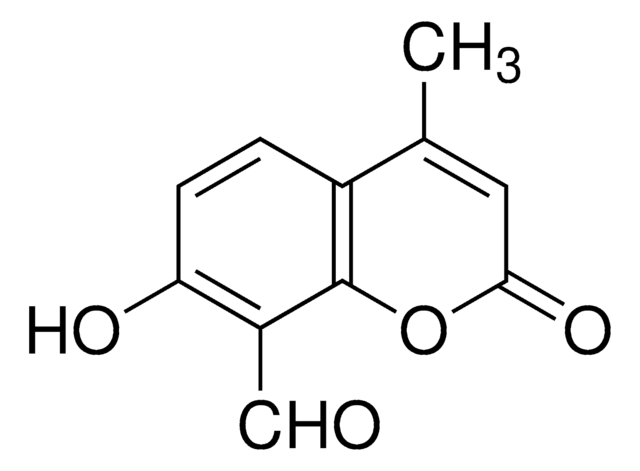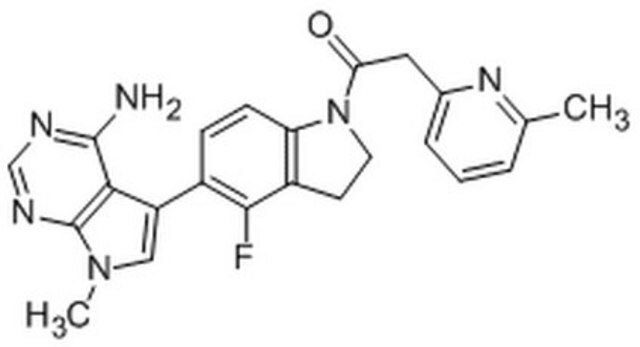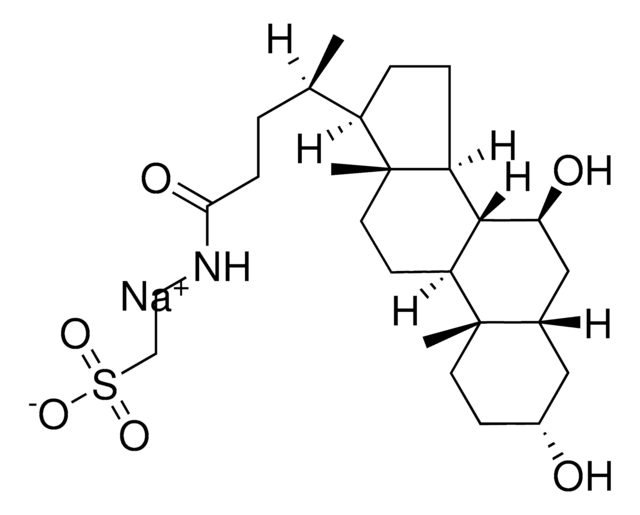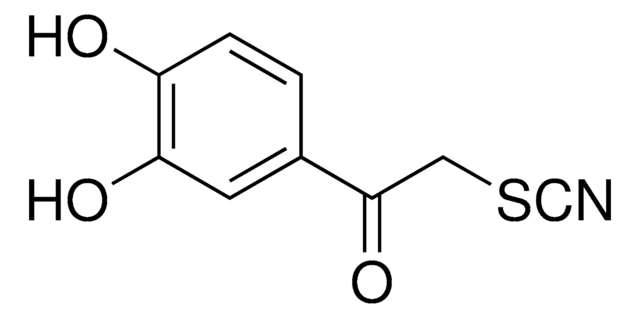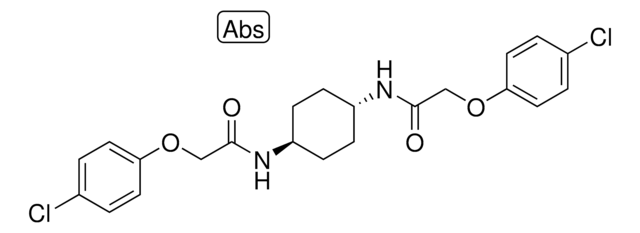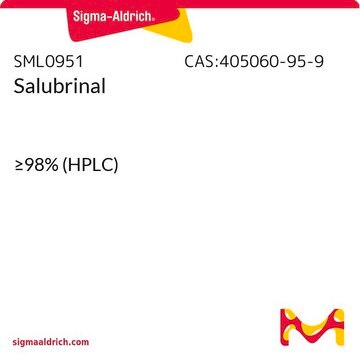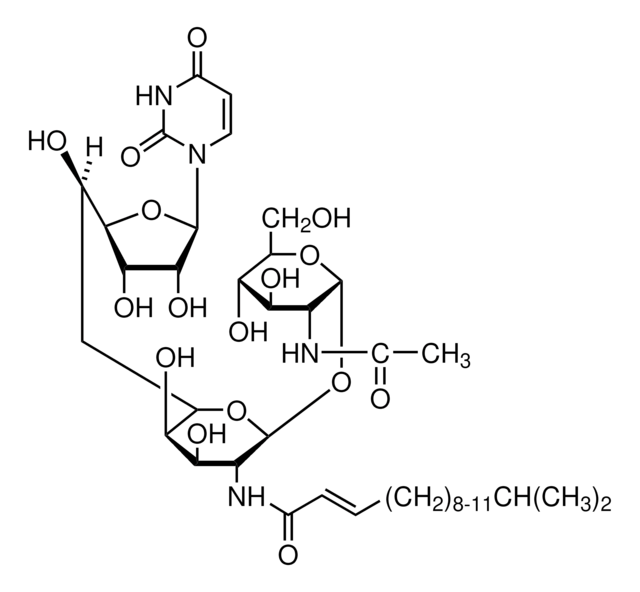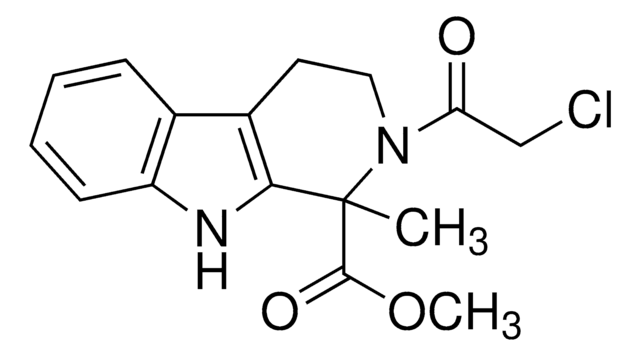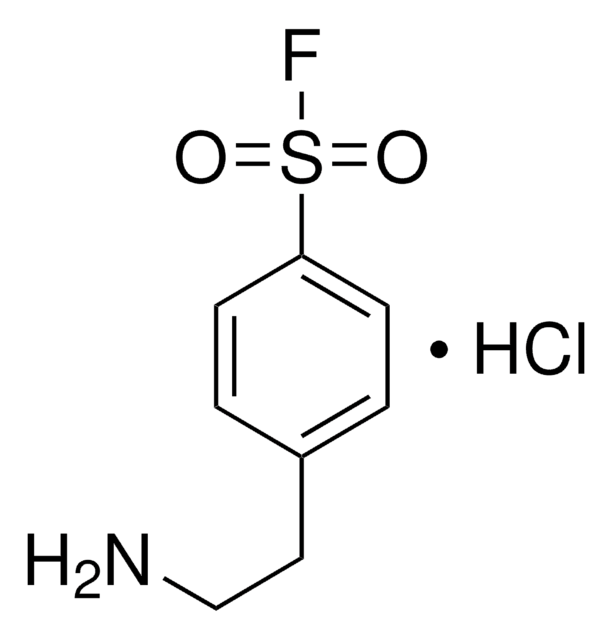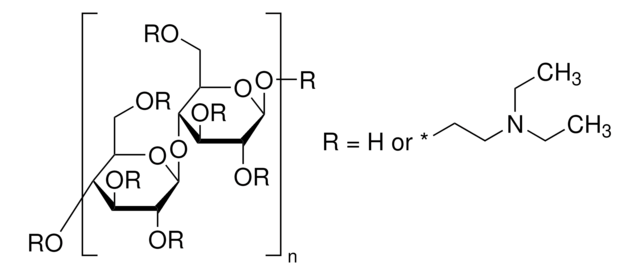SML2330
Ceapin-A7
≥98% (HPLC)
Synonym(s):
Ceapin-7, N-(1-{[2,4-bis(Trifluoromethyl)phenyl]methyl}-1H-pyrazol-4-yl)-5-(furan-2-yl)-1,2-oxazole-3-carboxamide
Sign Into View Organizational & Contract Pricing
All Photos(1)
About This Item
Empirical Formula (Hill Notation):
C20H12F6N4O3
CAS Number:
Molecular Weight:
470.32
MDL number:
UNSPSC Code:
12352200
NACRES:
NA.77
Recommended Products
Assay
≥98% (HPLC)
form
powder
color
white to beige
solubility
DMSO: 2 mg/mL, clear
storage temp.
2-8°C
Biochem/physiol Actions
The pyrazole amide Ceapin-A7 is a potent and highly specific ER stress-induced ATF6α signaling blocker (IC50 = 590 nM by HEK293T-based ERSE-luciferase reporter assay, ATF6α target transcripts GRP78/ERO1B/HERPUD1 induction IC50 = 459/522/614 nM in U2OS cells; ER stress by 100 nM Thapsigargin) that does not affect IRE1 or PERK branches of the unfolded protein response (UPR), nor proteolytic processing of its close homolog ATF6β or SREBP. Ceapin-A7 sensitizes U2-OS cells to ER stress-induced death (thapsigargin EC50 = 4.5/7.1 nM with/without 6 μM Ceapin-A7) without impacting the viability of unstressed cells.
WGK
WGK 3
Flash Point(F)
Not applicable
Flash Point(C)
Not applicable
Certificates of Analysis (COA)
Search for Certificates of Analysis (COA) by entering the products Lot/Batch Number. Lot and Batch Numbers can be found on a product’s label following the words ‘Lot’ or ‘Batch’.
Already Own This Product?
Find documentation for the products that you have recently purchased in the Document Library.
Customers Also Viewed
Justine Lebeau et al.
Cell reports, 22(11), 2827-2836 (2018-03-15)
Endoplasmic reticulum (ER) stress is transmitted to mitochondria and is associated with pathologic mitochondrial dysfunction in diverse diseases. The PERK arm of the unfolded protein response (UPR) protects mitochondria during ER stress through the transcriptional and translational remodeling of mitochondrial
Ciara M Gallagher et al.
eLife, 5 (2016-07-21)
The membrane-bound transcription factor ATF6α is activated by proteolysis during endoplasmic reticulum (ER) stress. ATF6α target genes encode foldases, chaperones, and lipid biosynthesis enzymes that increase protein-folding capacity in response to demand. The off-state of ATF6α is maintained by its
Rossella Benedetti et al.
Biomedicines, 9(9) (2021-09-29)
Polyphenols have been shown to possess several beneficial properties, including properties involved in the prevention or treatment of cancer. Among these polyphenols, a leading role is played by dihydroxyphenylethanol (DPE), the most powerful antioxidant compound contained in the olive oil.
Heike Kroeger et al.
Science signaling, 11(517) (2018-02-15)
ATF6 encodes a transcription factor that is anchored in the endoplasmic reticulum (ER) and activated during the unfolded protein response (UPR) to protect cells from ER stress. Deletion of the isoform activating transcription factor 6α (ATF6α) and its paralog ATF6β
Ciara M Gallagher et al.
eLife, 5 (2016-07-21)
The membrane-bound transcription factor ATF6α plays a cytoprotective role in the unfolded protein response (UPR), required for cells to survive ER stress. Activation of ATF6α promotes cell survival in cancer models. We used cell-based screens to discover and develop Ceapins
Our team of scientists has experience in all areas of research including Life Science, Material Science, Chemical Synthesis, Chromatography, Analytical and many others.
Contact Technical Service![PERK Inhibitor I, GSK2606414 GSK2606414 is a cell-permeable, highly potent inhibitor of EIF2AK3/PERK (IC₅₀ = 0.4 nM; [ATP] = 5 µM). Targets PERK in its inactive DFG conformation at the ATP-binding region.](/deepweb/assets/sigmaaldrich/product/structures/180/559/efa716dc-d5fe-4339-a6f0-0103084fc04a/640/efa716dc-d5fe-4339-a6f0-0103084fc04a.png)
